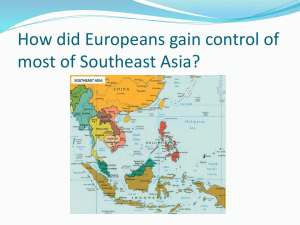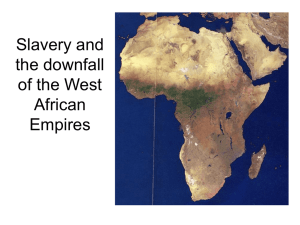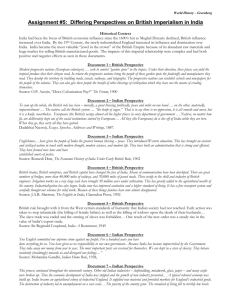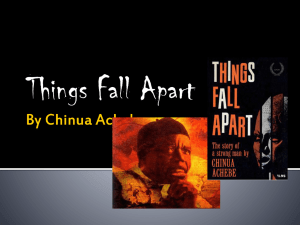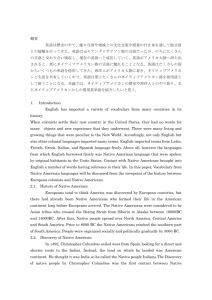The Peoples of Early America
advertisement
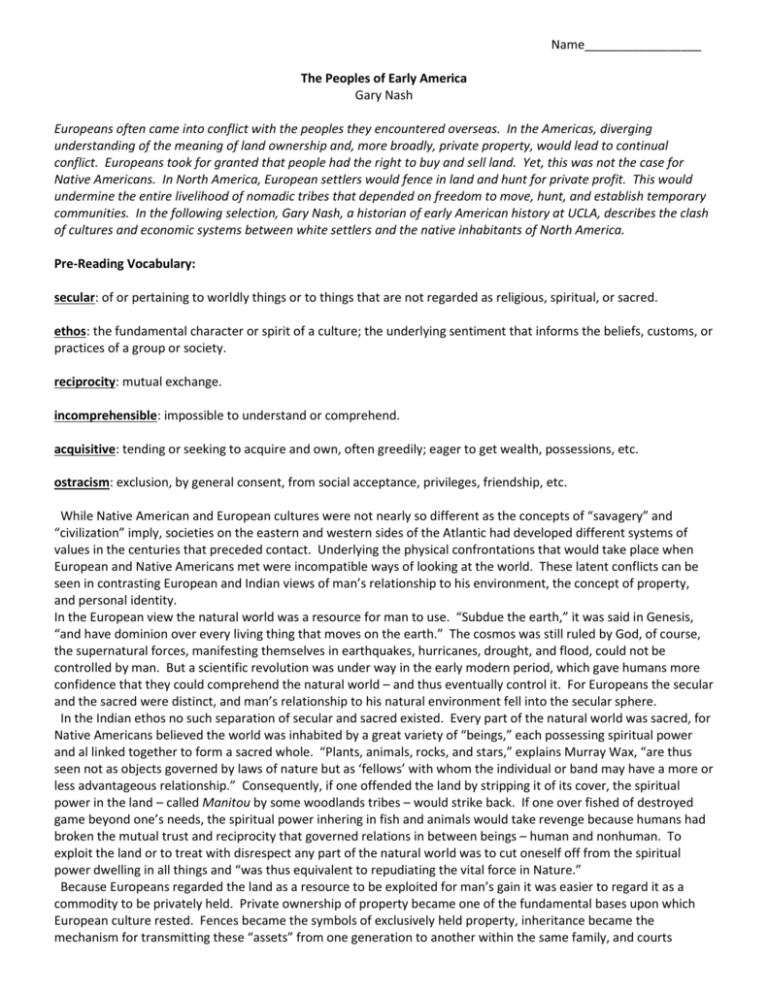
Name_________________ The Peoples of Early America Gary Nash Europeans often came into conflict with the peoples they encountered overseas. In the Americas, diverging understanding of the meaning of land ownership and, more broadly, private property, would lead to continual conflict. Europeans took for granted that people had the right to buy and sell land. Yet, this was not the case for Native Americans. In North America, European settlers would fence in land and hunt for private profit. This would undermine the entire livelihood of nomadic tribes that depended on freedom to move, hunt, and establish temporary communities. In the following selection, Gary Nash, a historian of early American history at UCLA, describes the clash of cultures and economic systems between white settlers and the native inhabitants of North America. Pre-Reading Vocabulary: secular: of or pertaining to worldly things or to things that are not regarded as religious, spiritual, or sacred. ethos: the fundamental character or spirit of a culture; the underlying sentiment that informs the beliefs, customs, or practices of a group or society. reciprocity: mutual exchange. incomprehensible: impossible to understand or comprehend. acquisitive: tending or seeking to acquire and own, often greedily; eager to get wealth, possessions, etc. ostracism: exclusion, by general consent, from social acceptance, privileges, friendship, etc. While Native American and European cultures were not nearly so different as the concepts of “savagery” and “civilization” imply, societies on the eastern and western sides of the Atlantic had developed different systems of values in the centuries that preceded contact. Underlying the physical confrontations that would take place when European and Native Americans met were incompatible ways of looking at the world. These latent conflicts can be seen in contrasting European and Indian views of man’s relationship to his environment, the concept of property, and personal identity. In the European view the natural world was a resource for man to use. “Subdue the earth,” it was said in Genesis, “and have dominion over every living thing that moves on the earth.” The cosmos was still ruled by God, of course, the supernatural forces, manifesting themselves in earthquakes, hurricanes, drought, and flood, could not be controlled by man. But a scientific revolution was under way in the early modern period, which gave humans more confidence that they could comprehend the natural world – and thus eventually control it. For Europeans the secular and the sacred were distinct, and man’s relationship to his natural environment fell into the secular sphere. In the Indian ethos no such separation of secular and sacred existed. Every part of the natural world was sacred, for Native Americans believed the world was inhabited by a great variety of “beings,” each possessing spiritual power and al linked together to form a sacred whole. “Plants, animals, rocks, and stars,” explains Murray Wax, “are thus seen not as objects governed by laws of nature but as ‘fellows’ with whom the individual or band may have a more or less advantageous relationship.” Consequently, if one offended the land by stripping it of its cover, the spiritual power in the land – called Manitou by some woodlands tribes – would strike back. If one over fished of destroyed game beyond one’s needs, the spiritual power inhering in fish and animals would take revenge because humans had broken the mutual trust and reciprocity that governed relations in between beings – human and nonhuman. To exploit the land or to treat with disrespect any part of the natural world was to cut oneself off from the spiritual power dwelling in all things and “was thus equivalent to repudiating the vital force in Nature.” Because Europeans regarded the land as a resource to be exploited for man’s gain it was easier to regard it as a commodity to be privately held. Private ownership of property became one of the fundamental bases upon which European culture rested. Fences became the symbols of exclusively held property, inheritance became the mechanism for transmitting these “assets” from one generation to another within the same family, and courts provided the institutional apparatus for settling property disputes. In a largely agricultural society property became the basis of political power. In fact, political rights in England derived from the ownership of a specified quantity of land. In addition, the social structure was largely defined by the distribution of property, with those possessing great quantities of it standing at the apex of the social pyramid and the mass of property less individuals forming the broad base. In the Indian world this view of land as a privately held asset was incomprehensible. Tribes recognized territorial boundaries, but within these limits the land was held in common. Land was not a commodity but a part of nature that was entrusted to the living by the Creator … Thus, land was a gift of the Creator, to be used with care, and was not for the exclusive possession of particular human beings. In the area of personal identity Indian and European values also differed sharply. Europeans were acquisitive, competitive, and over a long period of time had been enhancing the role of the individual. Wider choices and greater opportunities for the individual to improve his status – by industriousness, valor, or even personal sacrifice leading to martyrdom – were regarded as desirable. Personal ambition, in fact, played a large role in the migration of Europeans across the Atlantic in the sixteenth and seventeenth centuries. In contrast, the cultural traditions of Native Americans emphasized the collectivity rather than the individual. Because land and other natural resources were held in common and society was far less hierarchical than in Europe, the accumulative spirit and personal ambition were inappropriate … Hence, individualism was more likely to lead to ostracism than admiration in Indian communities. 1. Explain the Europeans’ views on nature and land. How did religion and the scientific revolution influence those views? 2. Explain the Native Americans’ contrasting views on nature and land. What is their relationship with nature and how does it respond to their actions? 3. Why would the idea of private property and “fences” be incomprehensible for the Native American tribes? 4. How did the Europeans and Native Americans differ in their views of the individual? 5. Which perspective (European or Native American) would seem to be more harmful to the natural world? Why?

